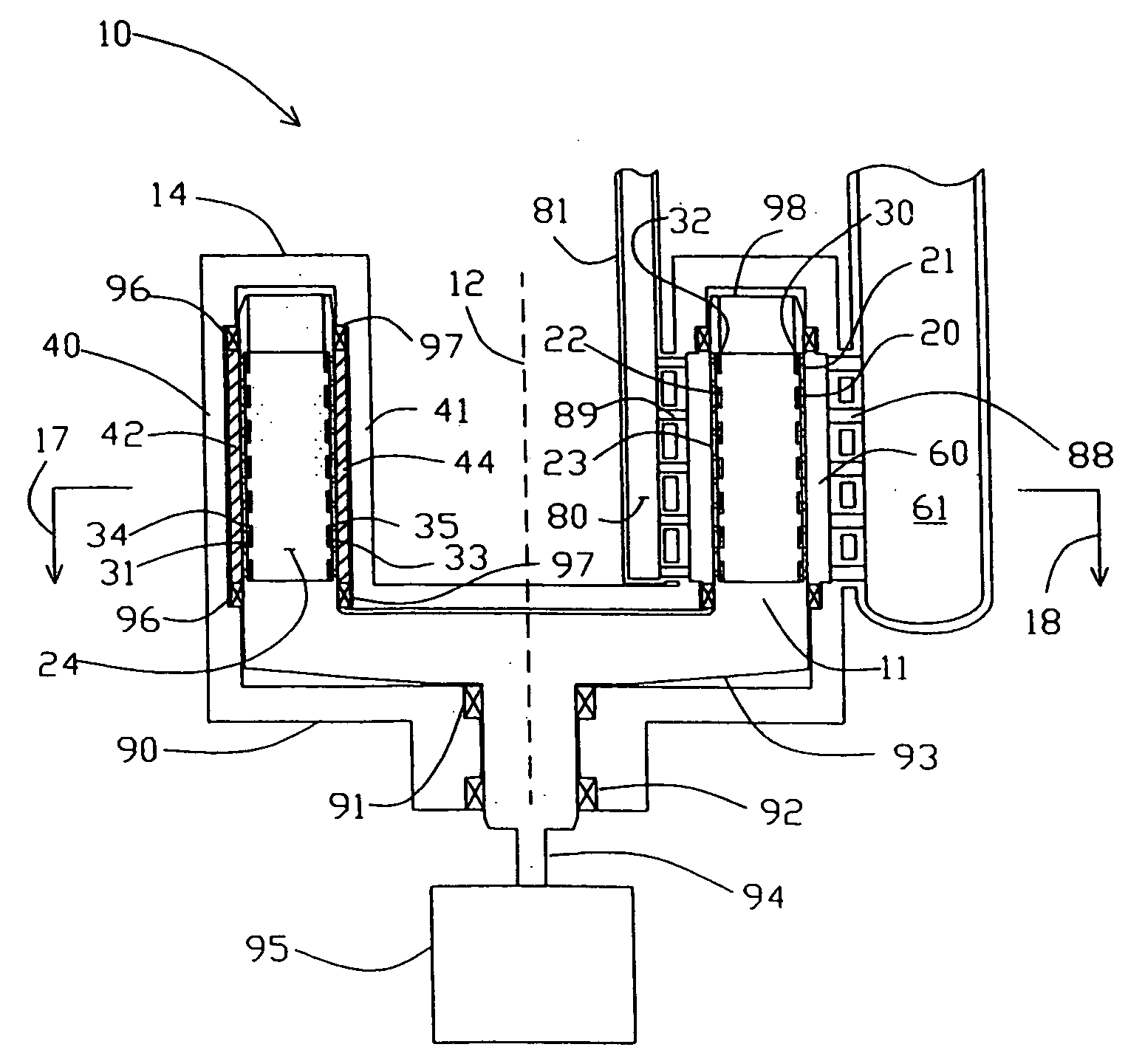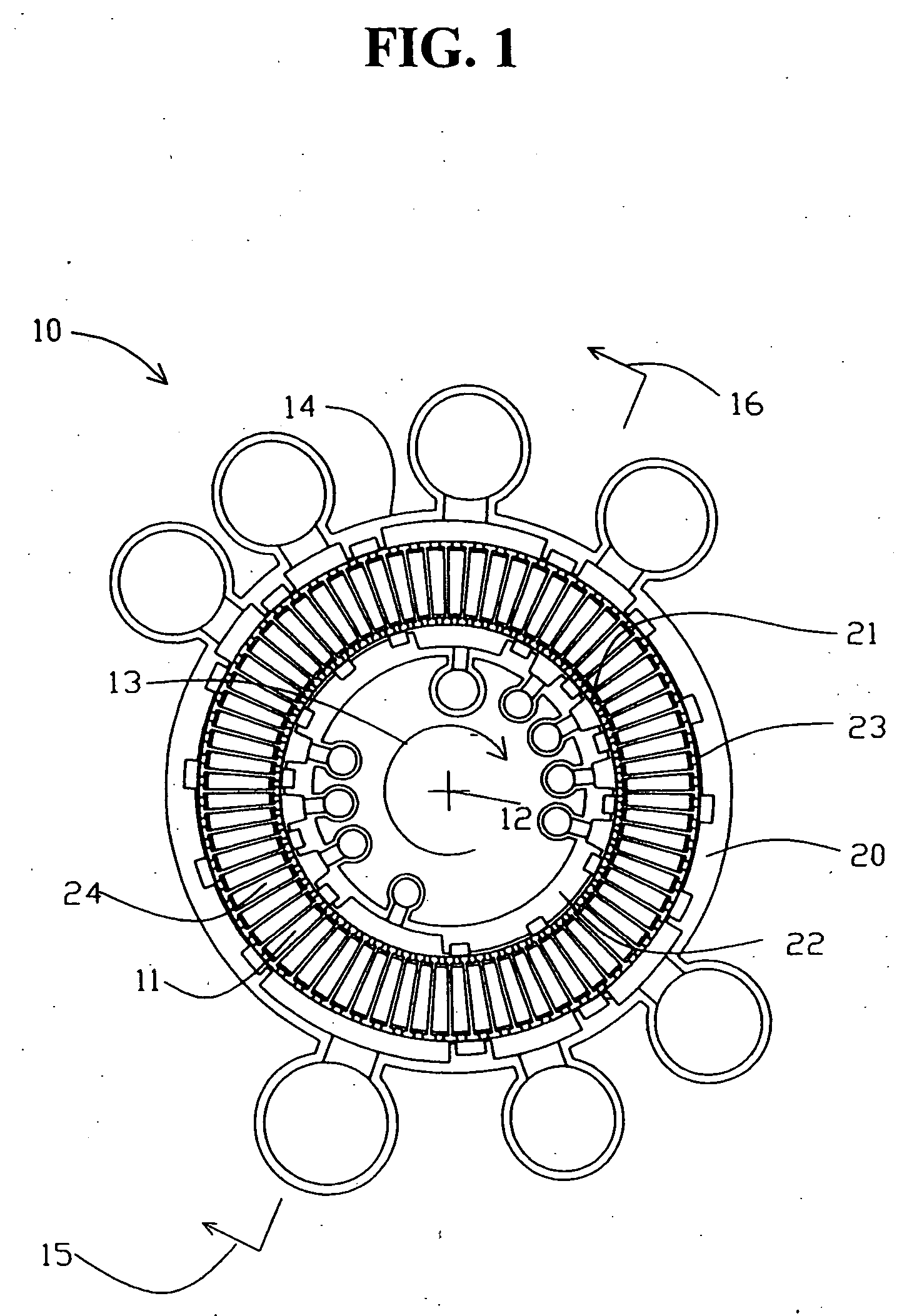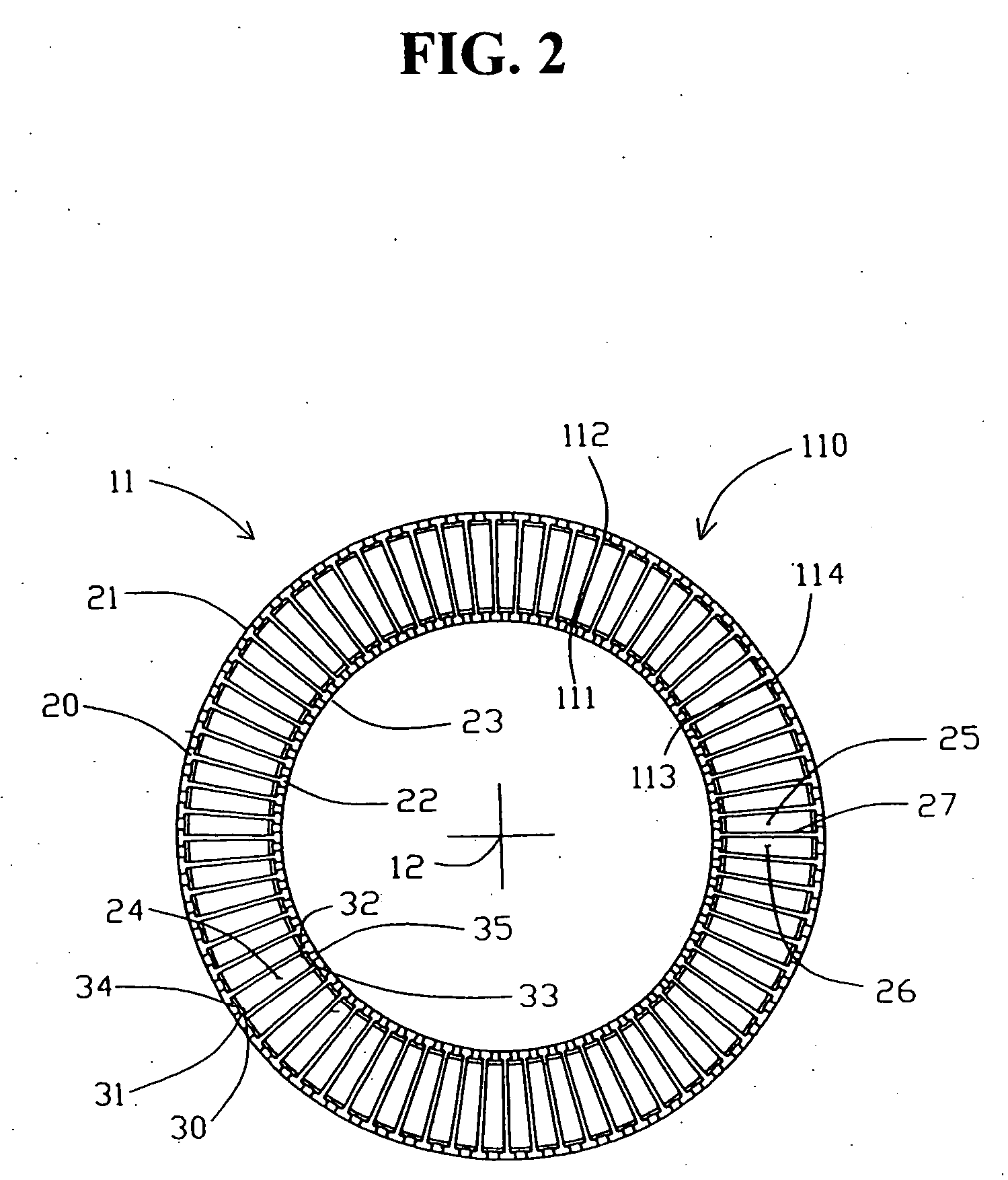Electrical current generation system
a technology of electric current and fuel cell, which is applied in the direction of electrochemical generators, energy input, separation processes, etc., can solve the problems of limited widespread use of fuel cells as power generation systems, severe impairment of pem fuel cells performance, and inability to meet the needs of large-scale fuel cell siz
- Summary
- Abstract
- Description
- Claims
- Application Information
AI Technical Summary
Benefits of technology
Problems solved by technology
Method used
Image
Examples
first embodiment
[0089] Turning now to FIGS. 9 and 10, fuel cell-based electrical current generating systems, according to the present invention, are shown using a rotary PSA system similar to that shown in FIG. 7 as the basic building block. However, it should be understood that the invention is not limited to electrical current generating systems having rotary PSA modules. Rather other arrangements may be employed without departing from the scope of the invention.
[0090] In FIG. 9, the PSA system separates oxygen from air, using nitrogen-selective zeolite adsorbents, as previously described. The light product is concentrated oxygen, while the heavy product is nitrogen-enriched air usually vented as waste. The cycle lower pressure 152 is nominally atmospheric pressure, unless an optional vacuum pump is provided as in FIG. 8. Feed air is introduced through filter intake 200 to a feed compressor 201. The feed compressor includes compressor first stage 202, compressor second stage 204, compressor third...
second embodiment
[0112]FIG. 12 shows a fuel-cell based electrical current generating system 400, according to the present invention, comprising a fuel cell 402, an oxygen-generating PSA system 404, and a hydrogen gas production system 406. The fuel cell comprises an anode channel 408 including an anode gas inlet 410 and an anode gas outlet 412, a cathode channel 414 including a cathode gas inlet 416 and a cathode gas outlet 418, and a PEM 420 in communication with the anode channel 408 and the cathode channel 414 for facilitating ion exchange between the anode channel 408 and the cathode channel 414.
[0113] The oxygen-PSA system 404 extracts oxygen gas from feed air, and comprises a rotary module 10, and a compressor 422 for delivering pressurized feed air to the feed compartments 424 of the rotary module 10. Preferably, the oxygen-PSA system 404 includes a vacuum pump 426 (or alternatively countercurrent blowdown expander) coupled to the compressor 422 for withdrawing nitrogen-enriched gas as heavy ...
embodiment 600
[0132] Embodiment 600 illustrates further aspects of the invention. For alkaline fuel cells, the crucial problem is removal of CO2 from both feed oxidant and hydrogen streams. The oxygen-PSA and hydrogen-PSA systems of this invention as described above will remove CO2 very effectively, since CO2 is much more strongly adsorbed than other permanent gas impurities. Oxygen enrichment is beneficial for all types of fuel cells in increasing voltage efficiency, although not usually justified except at high current densities. Alkaline fuel cells can use an under-sized oxygen-PSA for very effective carbon dioxide removal along with modest oxygen enrichment, or may use the same PSA device with an adsorbent lacking nitrogen / oxygen selectivity (e.g. activated carbon, or high silica zeolites) for carbon dioxide clean-up without oxygen enrichment. The rotary PSA module and compression machinery of this invention for entirely suitable for this role.
[0133] Alkaline fuel cells operating on ambient a...
PUM
| Property | Measurement | Unit |
|---|---|---|
| temperature | aaaaa | aaaaa |
| temperature | aaaaa | aaaaa |
| volume | aaaaa | aaaaa |
Abstract
Description
Claims
Application Information
 Login to View More
Login to View More - R&D
- Intellectual Property
- Life Sciences
- Materials
- Tech Scout
- Unparalleled Data Quality
- Higher Quality Content
- 60% Fewer Hallucinations
Browse by: Latest US Patents, China's latest patents, Technical Efficacy Thesaurus, Application Domain, Technology Topic, Popular Technical Reports.
© 2025 PatSnap. All rights reserved.Legal|Privacy policy|Modern Slavery Act Transparency Statement|Sitemap|About US| Contact US: help@patsnap.com



